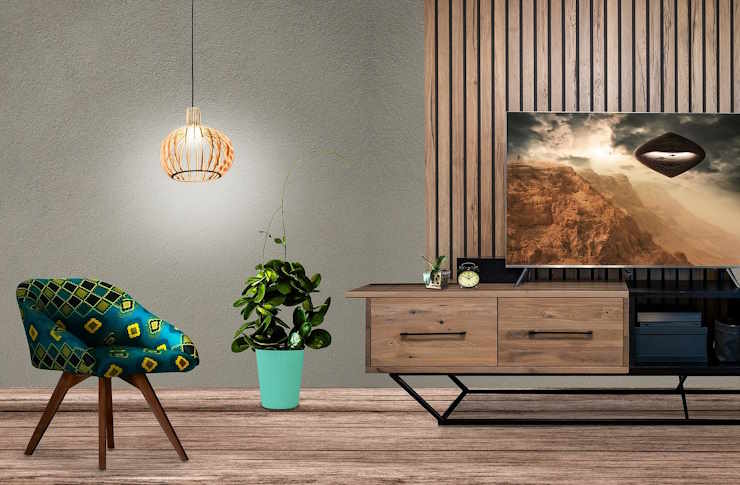Biomorphic Lighting: Nature-Inspired Illumination for Modern Interiors
The intersection of nature and technology has given birth to a captivating trend in home decor: biomorphic lighting. This innovative approach to illumination draws inspiration from organic forms found in nature, creating fixtures that are both functional and visually stunning. As homeowners seek to bring the outdoors in and create more harmonious living spaces, biomorphic lighting offers a unique solution that marries the beauty of the natural world with cutting-edge design.

The Origins of Biomorphic Design
Biomorphic design, which encompasses lighting and other decorative elements, has its roots in the early 20th century. Artists and designers began to explore organic shapes and forms as a reaction to the rigid geometries of industrial design. Pioneers like Isamu Noguchi and Alvar Aalto incorporated fluid, nature-inspired lines into their work, setting the stage for a movement that would evolve over decades.
In the realm of lighting, this approach gained momentum as designers sought to create fixtures that not only illuminated spaces but also served as sculptural elements. The advent of new materials and technologies in the latter half of the 20th century further expanded the possibilities for biomorphic lighting design, allowing for more intricate and realistic interpretations of natural forms.
The Allure of Organic Forms in Modern Interiors
Biomorphic lighting has found a natural home in contemporary interior design, where there’s a growing emphasis on creating spaces that feel connected to the natural world. These fixtures serve as focal points, conversation starters, and mood-setters, transforming rooms with their unique presence.
The appeal of biomorphic lighting lies in its ability to soften the hard edges often found in modern architecture. A sinuous floor lamp reminiscent of a vine or a pendant light that echoes the form of a water droplet can introduce an element of whimsy and organic beauty to even the most austere spaces. This juxtaposition of natural forms against sleek, contemporary backdrops creates a dynamic visual interplay that captivates the eye and soothes the soul.
Crafting Nature-Inspired Illumination
The creation of biomorphic lighting fixtures is a blend of artistry and engineering. Designers often begin with careful observation of natural phenomena, studying the intricate patterns of leaf veins, the spiral of a nautilus shell, or the delicate structure of butterfly wings. These observations are then translated into sketches and 3D models, which are refined to balance aesthetic appeal with practical lighting requirements.
Materials play a crucial role in bringing these designs to life. While traditional materials like glass and metal remain popular, innovative options such as bio-plastics, recycled materials, and even living elements are being incorporated to enhance the natural essence of the fixtures. Advanced manufacturing techniques, including 3D printing and laser cutting, allow for unprecedented precision in replicating complex organic forms.
The Psychological Impact of Biomorphic Lighting
Beyond their visual appeal, biomorphic lighting fixtures can have a profound impact on our psychological well-being. Research in the field of biophilic design suggests that exposure to nature-inspired elements can reduce stress, improve cognitive function, and enhance overall mood. Biomorphic lighting taps into this principle, creating environments that feel more nurturing and restorative.
The soft, diffused light often emitted by these fixtures can also contribute to a sense of calm and relaxation. Many biomorphic designs incorporate dimmable features or color-changing capabilities, allowing users to adjust the ambiance to suit different times of day or emotional needs. This flexibility makes biomorphic lighting an ideal choice for spaces dedicated to relaxation, such as bedrooms or meditation areas.
Integrating Biomorphic Lighting into Your Home
Incorporating biomorphic lighting into your home decor requires a thoughtful approach. These statement pieces work best when they have room to breathe, so consider placing them in areas where they can be fully appreciated. A large, tree-inspired floor lamp might become the centerpiece of a living room, while a cluster of jellyfish-like pendants could transform a dining area into an underwater wonderland.
When selecting biomorphic fixtures, consider how they will interact with other elements in your space. The organic forms can provide a beautiful contrast to angular furniture or complement existing natural materials like wood or stone. Pay attention to the quality of light emitted by the fixture, as this will impact the overall atmosphere of the room.
The Future of Biomorphic Lighting
As technology continues to advance, the possibilities for biomorphic lighting design are expanding. Smart lighting systems are being integrated into these nature-inspired fixtures, allowing for seamless control and customization. Some designers are experimenting with biomimetic materials that can change shape or color in response to environmental factors, mimicking the adaptive qualities of living organisms.
The future may also see a greater emphasis on sustainability in biomorphic lighting. As consumers become more environmentally conscious, there’s a growing demand for fixtures made from recycled or biodegradable materials. Some visionary designers are even exploring the use of bioluminescent organisms to create living light sources, pushing the boundaries of what’s possible in lighting design.
Biomorphic lighting represents a fascinating convergence of art, nature, and technology. As we continue to seek ways to bring the beauty and serenity of the natural world into our homes, these innovative fixtures offer a compelling solution. By embracing the organic forms that surround us and translating them into functional art pieces, biomorphic lighting is illuminating a path towards more harmonious, inspiring living spaces.





